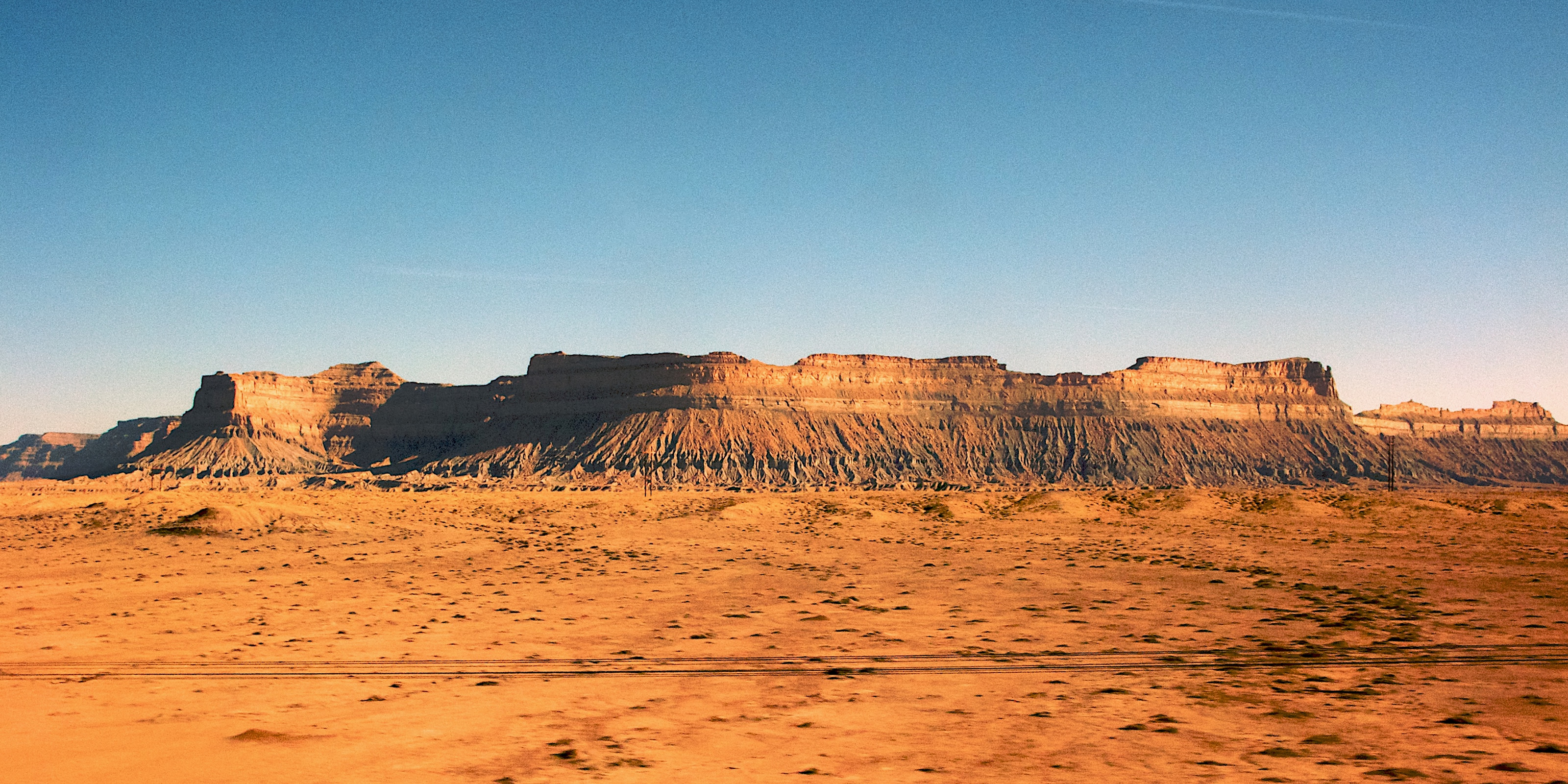Riding the California Zephyr

The landscape you travel across is one of the most scenic routes run by Amtrak
The California Zephyr is a 56 hour, 2348 mile long train journey that starts in Emeryville, California. After speeding across the deserts of Nevada and Utah, it climbs over the Rocky Mountains, tunnels under the Continental Divide before heading towards its final destination of Chicago’s Grand Union Station.
The route is operated by Amtrak (or the National Passenger Railroad Corporation to give it it’s official title), a publicly funded organisation. With this in mind, it’s no surprise to see that the equipment used is of a certain vintage. Bright orange and shades of brown decorate the sightseers lounge car, whilst green and blue tones grace the dinning car. Coaches go with a more subdued navy blue and cream combination. This, alongside the general styling of the Superliners consist (all signage being typeset in Helvetica, as was used in the original Amtrak identity), give this journey a distinct early-eighties feel.
Passengers of that era didn’t require wireless internet, or power outlets to charge their laptops, mobile phones and camera batteries. As such there are only three awkwardly placed power outlets in the Sightseers Lounge – easily detected by the number of people hovering around waiting for a socket to become free.
These Superliners also use the same recycled air systems as those found on planes, meaning that whilst you are able to travel in more comfort, you still get a dry throat and inhale the encircling germs. By the second day I was suffering from a common cold, and arrived in Chicago ready to spend the next two days in bed.
The ideal way to travel the Zephyr is in the sleeping cars, where you get a bed, shower and even your own power outlet, yet these compartments come at a huge premium, so like most others I found myself trying to sleep across two adjoining seats in coach.
The dinners served up on board are certainly better than I was expecting, yet this hardly matters. There can’t be any restaurants that serve up the kind of views as those from the tables of the Zephyr.
Landscape
The landscape you travel across is one of the most scenic routes run by Amtrak, with a timetable scheduled to ensure you get the best of it. At Sacramento, two guides from the California State Railroad museum jump aboard, and provide a commentary of the landscape as the train passes through the Sierra Nevadas.
Although these guides step of at Reno, the commentary is continued by the conductors, who pass through the mixed terrain that is the Rocky Mountains and Continental Divide several times a week.
Route of the California Zephyr
Unlike flying, travelling by train is a far more social affair. The dinning car is strictly community seating, meaning if you are travelling alone you are required to share a table with three others. This is an excellent way to meet people, and adds a different twist to transcontinental travel.
There is a wide variety of people that travel by train. For most of my journey I was sat behind a woman with a moustache whose husband was the size of a mountain. At Grand Junction I spoke to a Chinese student, who was doing two more long Amtrak routes after this one, as a quick and cheap means of seeing the country. At lunch, I met a couple on their way back home from Aspen. Later I had dinner with a couple on their way home to Michigan. In fact, most passengers on board were domestic travellers, with just a few tourists to be found.
Amtrak obviously provides a much needed service to the communities it serves, yet passengers are treated like second-class citizen on the country’s railroads, most of which are leased to freight operators, who have right of way. As such, we remained motionless for 10 to 15 minutes on many occasions as we waited for a freight trains to pass, and coming into Denver was a massively complicated affair. The timetable is more of an educated guess, than something that you can plan your journey against.
This lack of investment is a great shame. Train travel over flying should be encouraged, yet it also needs to be given more funding from Washington so it can better compete with the airlines.
Whilst a far slower means of travel, it certainly provides a more fulfilling experience. Not only are you able to witness the strange make-up of the United States close-up (both in the landscape outside, and those travelling with you on board), it’s also a far more relaxing way to travel. Just charge up your laptop, sit in the sightseers lounge and watch the landscape roll by.